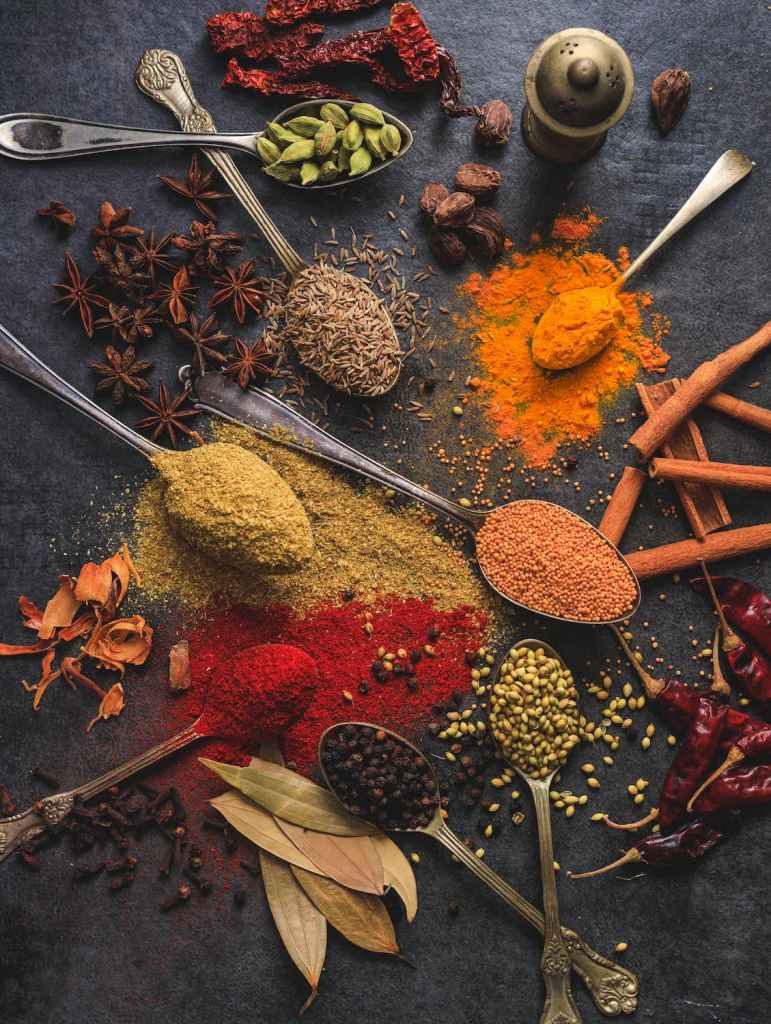
Though most of the old, cooking techniques aren’t feasible now and many of their methods cannot be followed in our modern kitchens, you can at least make a few changes to add that dash of flavour back into your meals. Our grandmothers would pound garlic and ginger into a paste on grinding stones (silbatta) or in hamam dastas. This would make food more delicious because when they ground those spices on a stone or hamam dasta, the crushing would extract all the essential oils and juices from them and release their distinct aroma and authentic taste. But now garlic, ginger and chilli pastes are available in readymade packages. So also, to prepare pastes, onions, cumin seeds, coriander seeds, whole red chillies, peppercorns etc. would be placed on the grinding stone (sil) and manually ground (with the batta) to get a fine, smooth masala paste which was later added into curries or pulavs. It made the gravies punchier, imparted a richer colour and added an intense and natural flavour to the food. Right from mid -morning, the kitchens would be filled with the aroma of freshly ground spices and pastes and their heady fragrance itself would make everyone’s mouth water. Now this tradition has taken a backseat since the introduction of high- tech food processors, blenders and electronic grinders. The silbatta and hamam dasta have either been tucked away in some hidden corner of the house or then been given away due to shortage of space in the kitchen. Many from the new generation might not even be aware of such kitchen tools and how to use them.
Modern appliances do make life easier; with gadgets you can paste or powder food items at the press of a button. On the other hand, stone grinding requires bodily strength and even takes longer to finish the task. But even today there are people in villages (and in cities) and quite some chefs around the world who use grinding stones and mortar and pestle to crush food items since they realise the value of these tools. Stone grinding brings out the real, raw essence and aroma of the masalas and pastes without warming up the food items, the way a food processor does. The heat generated by the machines gives a mild burnt flavour to the spices which consequently decreases the flavour of the dish.
Chutneys are an inseperable part of Indian cuisine and for south Indians, coconut chutneys are an accompainment with most of their meals fron dosas, utappam, wada and much more. Electronic gadgets usually chop, and slice food items and do not grind the way a stone grinder or a mortar and pestle does so the pastes and powders have a different flavour and chunkier texture. If you’ve tried grinding fresh coconut on a grinding stone you must know how it gives the chutney a silky and smooth texture and a soothing fresh aroma. Pounding and pulverusing via stone grinding releases its actual flavours and gives a much better texture compared to the spinning blade of an appliance.
Though it’s not possible to start off every morning by grinding about 1 or 2 tablespoons of red chilli powder for your daily requirement; you can pregrind and store some of those regular spices in the refirigator. But you can at least grind a few spices like cloves, cinnamon, cardamom, star anise etc. to get fresh garam masala to be added to biryani, pulavs or gravies like chana masala or matar paneer. A pinch of the blend with its appetising fragrance is enough to create magic in the food. Or then you could start with something more simpler like roasting some whole jeera and grinding it when you prepare raita or chaat dishes like dahi- wada or ragda- pattice. Sprinkle some on the dishes and see the difference in the fragrance and taste.
Besides the above mentioned factors, it’s well known that spices have innumerous health benefits. They strengthen our immune system and protect us from many common diseases. Therefore many medicines and kahwas are simply made from the masalas that are already present in our kitchen. A person can live a fairly healthy life if he eats good, nutritious meals prepared in the old traditional manners and stone grinding of spices is one such method. Machine grinding lessens their health benefirs since most of the nutrients (from spices) are lost when they are machine-ground.
And last but not the leas,t nothing can beat the goodness of a home- cooked meal. It is hygienic, nutritious and made as per your taste and preference. You can control the amount of fat you use while cooking which makes it lower in calories compared to a dininer at a restautant. Again, when you cook at home you will also be aware of the amount of processed ingredients you add. A home cooked meal also has a much lower amount of sodium and you can avoid artificial flavouring too which adds to the health factor. You also save on cash since food prepared at home doesn’t cost much whereas lunching at a restaurant turns out to be an expensive affair. One more aspect that you cannot deny is that it is prepared with love and care and positive vibes and no food joint or gourmet restaurant in the world can give this to you.